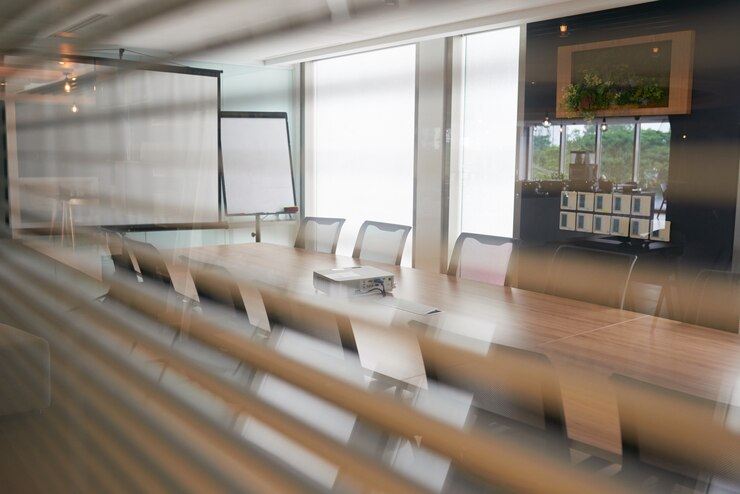
In an age where global connectivity and communication play a pivotal role in shaping our world, conference halls are the epicenter of knowledge exchange, brainstorming, and decision-making. The design and functionality of a hypothetical conference hall must cater to a diverse array of purposes, from business meetings to academic conferences and cultural events. In this article, we will explore the key elements that would constitute the ultimate conference hall, fostering an environment conducive to collaboration, innovation, and inspiration.
Location and Accessibility
The hypothetical conference hall should be strategically located to ensure accessibility and convenience for attendees. Proximity to major transportation hubs, hotels, and business districts is crucial. A well-connected location minimizes travel hassles and allows participants to focus on the conference itself.
Architectural Grandeur
The conference hall’s architectural design should inspire awe and admiration. A blend of contemporary aesthetics and timeless design elements can create a memorable space. A grand entrance, impressive foyer, and iconic facade would set the stage for a remarkable experience.
Versatile Spaces
The ideal conference hall would boast a variety of spaces to accommodate different types of events. This would include large, divisible conference rooms, breakout rooms for smaller discussions, and an exhibition space for sponsors and vendors. Flexibility in room layout and configurations is key to meeting the diverse needs of various events.
Cutting-Edge Technology
A technologically advanced conference hall is essential in the modern era. State-of-the-art audio-visual equipment, high-speed internet access, and interactive displays should be seamlessly integrated into every corner. VR and AR facilities could also be provided for interactive presentations and virtual networking.
Sustainability
To cater to our planet’s future, our hypothetical conference hall should prioritize sustainability. Incorporating green building practices, energy-efficient systems, and waste-reduction strategies would make the conference hall an environmentally responsible space. This would not only reduce its carbon footprint but also set an example for sustainable event management.
Comfortable Seating and Lighting
Comfortable seating and well-planned lighting are pivotal for participants’ experience. Ergonomic chairs and adjustable lighting ensure that attendees remain engaged and focused throughout long sessions. Natural light sources should be maximized, offering attendees a connection to the outdoors.
Acoustics
In our hypothetical conference hall, world-class acoustics would eliminate sound disturbances and reverberations, guaranteeing crystal-clear audio during presentations and discussions. This would be crucial for ensuring that every word spoken is heard and understood.
Culinary Excellence
A conference hall’s catering service plays a significant role in attendees’ overall satisfaction. An in-house culinary team should offer a diverse menu to cater to various dietary preferences. From coffee breaks to formal banquets, a wide range of culinary experiences can enhance the conference’s appeal.
Event Management Services
To ease the burden on event organizers, the conference hall should provide comprehensive event management services. This could include registration assistance, technical support, and a dedicated event coordinator to ensure seamless execution.
Accessibility and Inclusivity
The hypothetical conference hall should be fully accessible to individuals with disabilities. This includes ramps, elevators, sign language interpreters, and accessible restrooms. An inclusive environment fosters diversity and ensures that no participant is left behind.
Security and Safety
The safety of attendees is of paramount importance. The conference hall would have advanced security measures, including CCTV surveillance, well-trained security personnel, and emergency response plans. Health and safety protocols should be in place to address unforeseen circumstances, such as pandemics.
Aesthetic and Functional Interior Design
The interior design should reflect both functionality and aesthetics. Thoughtfully chosen color schemes and decor could set the tone for the event. The seating arrangement should be designed for comfort and collaboration, with ample desk space, power outlets, and connectivity options.
Networking and Interaction Spaces
Our hypothetical conference hall should offer designated networking spaces for participants to engage in informal discussions, exchange ideas, and build professional relationships. Lounges, coffee bars, and quiet corners would provide ideal settings for these interactions.
Greenery and Outdoor Areas
Incorporating greenery within the conference hall or offering easy access to outdoor spaces can provide attendees with opportunities to recharge and find inspiration. Rooftop gardens or open courtyards would create a harmonious balance between nature and architecture.
Branding and Sponsorship Opportunities
The conference hall should provide customizable branding opportunities for sponsors and event organizers. This not only supports the financial viability of the conference but also enhances the overall aesthetic of the space.
Sustainable Transportation Options
To further emphasize sustainability, the conference hall should encourage the use of sustainable transportation methods. Bike racks, electric vehicle charging stations, and convenient public transportation access can promote eco-friendly commuting.
Feedback Mechanism
An effective feedback mechanism is crucial to continuous improvement. Attendees should have an easy way to share their opinions and suggestions to enhance future events. This information can be invaluable in tailoring the conference hall’s offerings to meet evolving needs.
Conclusion
At Virtua Hub, designing the ultimate conference hall is a complex and multifaceted task that requires a careful balance between aesthetics, functionality, and sustainability. Our hypothetical conference hall incorporates all these elements to create an environment that fosters collaboration, innovation, and inspiration. Such a space would not only meet the diverse needs of modern conferences but also leave a lasting impression on all who enter its doors. In this hypothetical scenario, this conference hall stands as a symbol of what is possible, inspiring real-world venues to strive for excellence and deliver unparalleled experiences to their participants.


